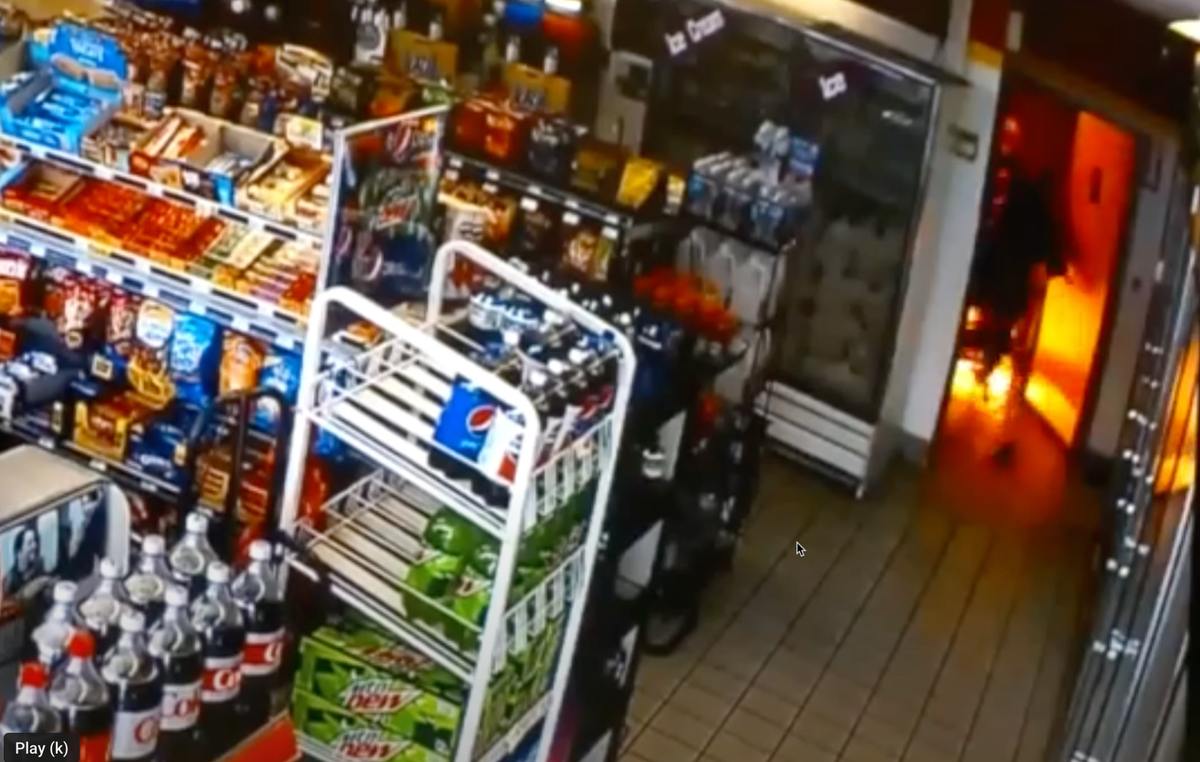The Caineville Case Study

A few years ago, a shirtless man walked up to a Chevron gas pump with an empty gas can, paid for five gallons of gasoline and promptly dumped all of the contents over his head. Then he walked into the store.
Within minutes, the cops arrived, cleared the building and tried reasoning with the man. The man, still glistening from the gasoline shower, turned and ran into the men’s bathroom, where the cops gave chase. Inside the bathroom, they found the man with wide eyes, holding a Zippo lighter, alternately opening and closing its lid with his thumb.
If you were the cops, what would you do?
What you see on the video is the outcome of those decisions.
But it wasn’t the final outcome.
Within minutes, a fire engine had arrived. More cops, a few ambulances. The shirtless man was whisked off in an ambulance with severe burns over most of his body. Halfway to the hospital, the ambulance rendezvoused with an air ambulance and they transferred the patient from - as we call it - diesel to Jet A therapy. It’s only a few more minutes in the air before the short final to the pad at the hospital. The man sits up and kicks the side aircraft door off the helicopter, the jettisoned door narrowly missing the tail rotor. The air ambulance makes a hard landing, the skids bouncing off the pavement. The man runs to the edge of the helipad to jump 100’ to the earth but is tackled by security before the leap.
Lessons Learned
In hindsight, it’s clear that the outcome was not what the public safety folks were expecting. They were dealing with an unreliable, suicidal patient who not once but twice tried to take public safety (law enforcement, fire, EMS) to the gates of Hell with him. It’s also clear that with the public removed from the Chevron gas station, the man could only inflict harm on himself. With time and water on your side, it’s easy to have made the call to stall, back up the fire engine, hose the man down, and then subdue and apprehend him, cuffs and all. In situations like this, the risk management consultant Gordon Graham, above all, recommends slowing down.
So why didn’t they do that? What may be even more interesting is that when I have role played this event to public safety personnel (all without the benefit of hindsight), they all made the same exact decisions as the original group.
The Real Lesson
The real lesson in accident analysis is to view the situation as it made sense to the people at the time it was happening. Hindsight bias is an inordinately tricky trap for anyone looking to find a simple, elegant and ultimately wrong reason for human failure. Hindsight bias can occur when something bad happened...or when #nothingbadhappened (but instead you just got lucky). I have a few pieces dealing with Hindsight 20/40 (when people learn the wrong lessons - you may have read last week’s Stacking the Deck) and when #nothingbadhappened. Its companion piece (and far better in my opinion) is Hindsight 20/40. In the Hindsight piece, I try to answer the question whether it's possible to develop expertise in the avalanche world.




